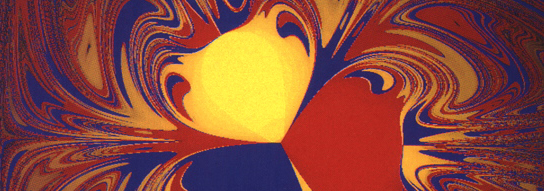No previous geological era or epoch includes humans in its definition, and in the scales of geological time, the appearance of homo sapiens on the global stage is a mere blip. The human self-image that unfolds in the modern period has insisted on a separation between homo sapiens and the world, between nature and culture. The concept of the Anthropocene is a challenge to that peculiar form of narcissism. Human societies and their material artifacts are evaluated just like other events in the history of the Earth. The claims to human exceptionalism are set aside. A single geo-history replaces the two accounts of life on earth: natural history and human history.
Read MoreSocrates first discovered the concept, or eidos as the relation between the particular and the general and as a germ of a new meaning of the general question concerning being. This meaning emerged in its full purity when the Socratic eidos went on to unfold into the (transcendental) Platonic "Idea." (see also essence) The eidos is absolutely and eternally real, but in respect to each single realization, it is the possible, its potentiality.
Read MoreThe Nature / Culture distinction is one of the most visible of those "marked" oppositions in Western culture, that attribute a superiority of one term over the other. The unmarked category is the category present to itself, the category of identity. The marked category is the category of " otherness," of value defined by another. Of course, sometimes the latter term is used in the critique of these dualisms -- held up as a superior term (perhaps under another set of conditions)...
Read MoreA singularity is a kind of discontinuity. It might or might not be interesting. A vaguer use of the term is simply "a point where something happens" (although this equally describes an event.) Deleuze and Guattari are fascinated by singularities because they are points of unpredictability, even when deterministic. They are thus the sites of revolutionary potential.
As used by mathematical physicists, a singularity means a place where slopes become infinite, where the rate of change of one variable with another exceeds all bounds, and where a big change in an observable is caused by an arbitrarily small change in something else. (cf sensitivity to initial conditions). It is an actual point of infinite density and energy that's kind of a rupture in the fabric of space-time.
Astrophysics describe the centers of black holes as singularities.The Big Bang is considered to be a singularity.
A phase singularity is a point at which phase is ambiguous and near which phase takes on all values. Time at the poles of the earth is an example.
Read MoreFor Robert Smithson, architecture depends on the repression of entropy.
"The dream of architecture is to escape from entropy." (Informe: Mode d'Emploi )
In the late nineteenth century speculation about entropy intersected with the culture of colonialism, with the uneasy relations between technological progress (primarily through the heat engine) and a sense of cultural pessimism. Thus for Oswald Spengler, entropy "signifies today the world's end as a completion of an inwardly necessary relation." (see Crosbie Smith and Norton Wise, Energy and Empire )
In 1852 William Thompson, Lord Kelvin, predicted the death of the earth from heat loss in an article entitled "On a Universal Tendency in Nature to the Dissipation of Mechanical Energy." In it he wrote that "There is at present in the material world a universal tendency to the dissipation of mechanical energy. Any restoration of mechanical energy, without more than an equivalent amount of dissipation, is impossible...and is probably never effected by means of organized matter, either endowed with vegetable life or subjected to the will of an animated creature." "Within a finite period of time...the earth must again be unfit for the habitation of man as present constituted." (quoted and commented upon in Hayles, Chaos Bound, pp 39-42)
Read More"It is the theory that decides what we can observe." (Einstein)
"It is more important that a theory be beautiful than it be true." (Paul Dirac)
In Greek, theoria originally meant a looking at or viewing and theoreo, a spectator. In this sense, theory and Visuality are metaphors of each other.
Is the theoretical attitude is that of the disengaged observer? Does theory require a distinction between the illusionless observer and the gullible participant, or to put it more mildly, between theory and observation? Does theory always entail what John Dewey derided as the "spectator theory of knowledge"? Perhaps to theorize is to create the impression of something that existed already (or, even better, always already) (see metaphor) In the Pragmatic tradition, theory is the critical reflection on "belief." William James calls it "an appetite of the mind," what Frank Lentricchia calls "the need to generalize" and "to obliterate differences." (quoted in Cary Wolfe, Postmodern Theory and the Pragmatics of the "Outside" )
But according to the Greek conception, theory is not a knowledge but touching (thigein ).
Read MoreThe etymological origins of "abstract" are the latin abs trahere , to draw away from. Thus the abstract is separated from body, object, or application. It can describe qualities apart from any object or thing. In Archaic Greek art, the genre of particular things outweighed their specific, individual qualities in artistic representation. Hence abstraction, expressed through the geometricization of natural forms, dominated Archaic art. A Greek polis , when understood as a particular pattern of life and not just a geographical grouping of people and their belongings, was essentially an abstract conception, just as a nation "is today. (see J.J. Pollitt, Art and Experience in Classical Greece.) When we describe a culture in terms of categories such as "religious," "economic," etc. we are not describing real subdivisions, but are making abstractions for our convenience. In the study of "structures" the practice of analysis consists in constructing "models" that replace the study of concrete phenomena by that of an object shaped through its definition.
Read More"one of the most important tasks of Renaissance philosphy and mathematics was the creation, step by step, of the conditions for a new concept of space. The task was to replace aggregate space by system space ." (Cassirer, Individual and Cosmos p.182) (cf smooth / striated) (cf perspective )
Read More"The negative construction of ....others is finally what founds and sustains European identity itself." (Hardt and Negri) For Hegel, the effort to overcome the Other is simultaneously an effort to overcome self- consciousness' own otherness to itself. Hegelian negativity simultaneously restored and systematized, unleashed and bound the power of the Other, against and within the consciousness of the Same. In the work of self-consciousness, which is desire in general, the subject finds ways to integrate what at first seems to lie outside itself. But during the ongoing course of this process, the subject changes, to the point that the subject can be considered only a term for the process that it accomplishes.
Read MoreFor Logical Positivists, such as A.J.Ayer, the only statements that can be verified are those that are analytic. According to Ayer, they cannot be confirmed or refuted by facts of experience, and "do not make any assertion about the empirical world, but simply record our determination to use symbols in a certain way."
Read MoreThe Anthropic Principle: explains the existence of cosmological facts by noting that only certain conditions could have evolved life in the universe: It is doubtedlessly correct that the universe in which we live is the kind of universe whose laws allow, at least in certain of its neighborhoods, for the emergence of creatures like us.
Read MoreIn the late nineteenth century, with the rise of a philosophically oriented art history, the philosophical issues of how we perceive space gave way to the psychological problem of how we come to take delight in the characteristics of formand space. The philosophical art historians sought the "basic principles," (Grundbegriffe ) underlying the creation and appreciation of art, and their historical transformations.
Read MoreThe French zoosystéician Louis Bec argues that "With the advent of the sciences of the "artificial" and of communication, as well as the explosion of the technosciences and the sciences of the living a "lieu" (site or place) has emerged in which the total integration of arts, sciences, and technology can be achieved. There are now two different "epistemological poles" that encompass this integration. The first strives to link "poetic", "symbolic" descriptions of nature's mechanisms to scientific ones, producing " metaphorical expressions". (cf Gaia) The second involves activities ( cybernetics, artificial intelligence,...) which, among other ends, ultimately aim to simulate and act on the world, to better understand it by transforming it. (See Artificial Life II)
Read MoreThe French terms of both agencement and dispositif used by Deleuze and Guattari are usually translated as assemblage. An assemblage is a "site at which a discursive formation intersects with material practices" (Jonathan Crary, Techniques of the Observor, p. 31) It is "simultaneously a machinic assemblage and an assemblage of enunciation" (D+G, Thousand Plateaus, p. 504)
Read MoreCatalysts are chemical substances that modify reaction rates without themselves being changed in the process. Their kinetics are characterized by threshold and amplification phenomena. Enzymes are the major class of biological catalysts.
Read MoreAutopoesis is both a concept about self-maintaining systems, especially biological ones, and an epistemological theory about cognition and self-reference.
Read MoreFor Poggioli, futurism defines one central aspect of the avant-garde, which in Ortega Y Gasset's words, is that the historical task of the contemporary artist is to "work in the present for the future". In this "historical mythology of contemporary art" the work of the avant-garde presents the shape of things to come. Poggioli differentiates between the actual artistic movement of Futurism and that movement's claim to the concept of the avant-garde. For Poggioli,Futurism "possessed in its name the most successful and suggestive formula thought up by the avant-garde" but the movement "was one of the lowliest and vulgar manifestations of avant-garde culture" (p.143) If real futurism is dead forever, ideal futurism is still living, precisely because it renews itself in the consciousness of each successive avant-garde. (p.223). Reyner Banham also enthusiastically described the Futurist example and its exaltation of speed while distancing himself from its politics.
Read MoreThe term "bachelor machine" was first used by Marcel Duchamp around 1913 in connection with pieces of work that would later be assembled in the Large Glass of 1915-1923. (Also known as the bride stripped bare by her bachelors, even) For Duchamp, the term refers specifically to the lower portion of the glass, the realm of the bachelors, which contains, among other things, the chocolate grinder, the cemetary for uniforms and liveries -- Priest, Delivery Man, Gendarme, Cuirassier, Policeman, Pallbearer, Footman, Stationmaster and Page Boy -- and the témoins oculistes. The Large glass consists of two distinct realms, the realm of the bride above, and the realm of the bachelors below, both desiring and imagining one another without any possibility of mutual comprehension. (one is here reminded of the real / imaginary distinction and the discussion of cyberspace)
Read MoreThe phase space of a particular dynamical system is partitioned into one or many basins of attraction , perhaps intimately intertwined, each with its own attractor .
basins of attraction for a pendulum swinging over three magnets. (from Peitgen, Jürgens, and Saupe, Chaos and Fractals)
Read MoreA bifurcation occurs when an attractor changes qualitatively with the smooth variation of a control parameter. Physically, bifurcations denote phase transitions from a state of equilibrium to new possible states of equilibria. (see also singularities)
Read More


